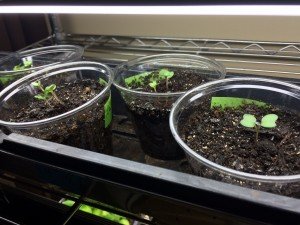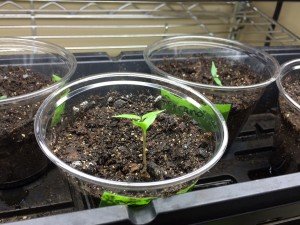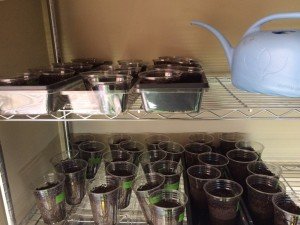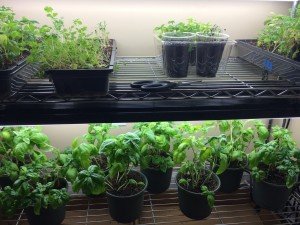Spring is a yearly invitation t0 new beginnings, and an annual reminder of age-old renewal. It is the time of year that I am certain Khalil Gibran wrote the words "And forget not that the earth delights to feel your bare feet, and the winds long to play with your hair."
But sometimes, life gets in the way.
Although life has gotten in the way for much of the past 3 years, permaculture additions over that time allow me to participate in this year's rebirth.
Last fall, thornless blackberries and raspberries were added, along with the fabled pawpaw tree and dwarf peaches. The pawpaws are just beginning to green out, but the peaches are blooming the prettiest pink blossoms.
Read MoreThe last frost date for this area passed without incident on April 9th and today was my first day home to survey the perennials and sow some annuals.I'm just going to say it, my over-wintered herb garden is just darned pretty this spring. And I am beside myself that the chives are not just alive but thriving! After years of refusing to grow for me, they are vigorous and even blooming.I was also ecstatic to see the blueberries bountifully in bloom!Last year the blueberries were conned into blooming by the false spring and a hard, late frost killed most of the flowers. A feeble second bloom happened after the last frost but didn't amount to much.The strawberries were also a pleasant surprise, not just sporting a healthy head of blooms but some hard green strawberries already just waiting for the warmth of the sun to make them blush.I threw caution to the wind a few weeks ago and mixed up the assorted lettuce seeds I had on hand and sowed them thickly in 1/2 of a bed. I love the mix of the reds, greens and the little ones already wearing speckles.And lastly I laid down 18 rows of spinach in the front 3/4ths of these beds that will also host 2 tomato plants each in a few weeks.Ahhhhh...the gardener's Spring has finally sprung!
Read MoreWinter is a quiet time for the garden. The cooler temperatures and shorter days signal a change and the earth changes orientation from growth to conservation. The plants that continue to grow through the changing of the calendar year do so at a pace that resembles drowsy, hibernating animals. It is a necessary fallow season. A time to rest and restore between the endeavors of growing seasons. This is true for both garden and gardener.These were the thoughts turning over in my head yesterday as I tidied up the asparagus and herb beds, tucking them in for winter.
The herbs had overgrown in the last flush of fall so I corralled them to their respective sections with clippers and kept some nice sprigs of thyme, oregano and parsley for tonight's soup. Visually the thyme and the rosemary blend together both in person and photos so I think I will swap out the fast growing parsley and thyme next spring and let the rosemary continue to grow in the center of the bed.All that remains to close out my 2017 garden is to give the figs a much needed pruning and trim back the blueberry bushes a bit. It has been a quiet time for my garden and blog with the time normally spent growing, cooking and writing instead going to other endeavors this year. There is a little more time between now and spring temps here in the south. The last bit of the fallow season, with weeks that can be counted on hands now. My 2018 seed catalog has arrived and I am beginning to plan for the renewal.
Read MoreMy experiment with the front yard herb garden has come to a close.On Sunday I thinned my 150+ strawberry plants that were spread over two beds down to 32 first-year runners in one bed. Back in April I wrote about a New Zealand farmer that said first-year plants produce larger quantities of bigger berries and determined that I would try to save enough runners to have a fresh bed for 2017. This opened up a whole 4'x4' box to overwinter herbs in.Overall the herbs did fairly well in the front, though the bunnies enjoyed the french tarragon for a while this spring and the chives were eaten down to nubs repeatedly. I did a little research and it seems that the tarragon may over winter in my zone, and I am sure the sage and oregano will do fine. The rosemary is a maybe and I have no idea about the thyme or dill, but I planted everyone in a checkerboard pattern to allow for some sprawling and hopefully some self sowing for a perpetual herb garden.Once established, I will trim back the herbs and dry the cuttings for my fall/winter use and mulch the plants with leaves to retain heat, moisture and feed the soil.
Read More





